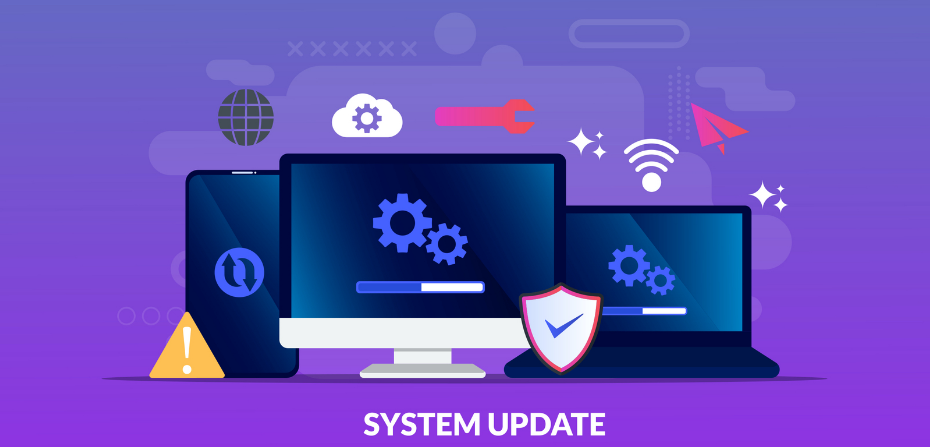
In the world of cybersecurity, there is nothing quite as important as updating the software of your system, or systems. This refers to getting the updates that are officially released by developers of the brand of the product or service you are using. Most importantly, due to the dangers of just being online at any given moment, updating a system as promptly as possible with the latest patch/update is of critical importance. Recently, the industry is seeing a lot of vulnerabilities that are cropping up on CVE lists (Common Vulnerabilities and Exposures) and updates are being issued to constantly address these potentially risky security flaws. 2020 saw over 18,000 of these security flaws, for example, that are held in the United States NVD (National Vulnerability Database.) This number has increased when compared to 2019 and 2018 when the number was just 17,000 for both years. Furthermore, on vulnerabilities, web applications are also a big source of vulnerabilities when not properly patched or updated meaning that critical risks can arise from these web apps. The amount of vulnerabilities for a given size of a company also changes, as this most often applies to companies that have, according to statistics, 100 or more staff. Keeping a system updated does not only keep common vulnerabilities at bay but as we shall see below has a host of other benefits. Metaphorically speaking, keeping a system (or any device, for that matter, connected or not) updated opens up a host of other benefits.
A computer system or device that is not updated is at risk, and below we will look at exactly what can happen to an unprotected system. We are also going to cover why updates are so important in general.
Table of Contents
Why Are Updates so Important?
Updates are sometimes called patches, or upgrades in another context (but similar once again.) It is important to delineate or distinguish the differences between an update, a patch, and an upgrade. An update is the same thing as a patch, and it can update a system to a newer version in increments (like in .1 or .5 increments.) An upgrade, on the other hand, is a completely new version or significant structural change to the software.
Updates exist to carry a system ‘version’ to another level. An example of this is that, if let’s say your macOS is running version 14.0, an update would be 14.1. Just the same way, if you are running a browser, these often update due to the potential risks (say your system tells you to download the latest patch of your browser, updating it to version 23.4.) Extremely important for several reasons, other than just keeping vulnerabilities and security flaws at bay as mentioned above. Keeping a device updated offers the following benefits;
- Closing off gaps and holes e.g. security vulnerabilities (as stated above)
- Enhancing how a system functions (streamlining and efficiency)
- The eradication of system bugs (known errors in the UI for instance)
- The introduction of new software features (new capabilities)
- Improves compatibility with other software (that is also patched up)
Examples of What Can Happen in a System That Is Not Updated
First and foremost, updates and patches are created by software developers to keep you safe from any security holes in the software that you use. These security holes can lead to a breach of cybersecurity or even privacy, the worst case being that you are vulnerable to cybercriminals and malware (malicious software.) When you use an older version of the software and have not updated it, several things can happen;
- The software can become ‘buggy’ meaning slow and cumbersome
- The compatibility issues of unpatched software with other software can cause stability issues and other problems
- Cybercriminals prey on unpatched software vulnerabilities
- Unpatched software can allow an exploit to infect your computer
- Updating your systems means protecting the data on your system
- An unpatched system can pass on malware infections to the rest of the network
- An unpatched system will not be able to communicate well with newer software
For instance, let’s take macOS. Apple is very stringent with their update/patches and upgrades and all of it is done via the ‘Software Update’ center. In this center, each and every update available for your current system is listed (with the version number there as well.) Apple has made it so that a user does not have to necessarily upgrade to a completely new version of the operations system (OS) such as Big Sur currently. However, critical stability and security updates constantly remind the user that he/she must patch as soon as possible. Even if the user is on an ‘older’ operating system such as Catalina, security updates and stability updates will continue to be available for this system. By default, most computer systems, software products, and services come with the ‘Automatically Update’ feature which takes the responsibility off of the user and automatically takes care of all updates. Because the internet is constantly being updated and patched itself as well as growing and evolving, systems have to keep up. If a user decides never to update their system, they will eventually not be able to access even the simplest functions such as accessing the internet, or email. A system that isn’t updated can still function with legacy software disconnected from ‘the grid’ but with the most critical infrastructure online these days, updating and patching is a must for everyone.